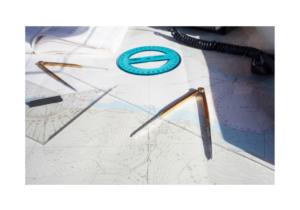Oct 27, 2021A Beginner’s Guide to Contra Asset Accounts
Contra accounts are accounts listed on the balance sheet that have an opposite—or contrary—associated account. These contra accounts capture the opposite balance of their associated accounts in order to allow the original account to reflect a more accurate value. When the two accounts are listed together on the balance sheet, they reflect the net value of the two accounts. This article examines contra asset accounts, why they are used, and the different types of contra asset accounts that can be created.
What Are Contra Asset Accounts?
Contra asset accounts are what their name suggests—an account that is the opposite of an associated asset account. Contra asset accounts are credit accounts and have a zero or negative balance, while their associated asset accounts are debit accounts with a positive balance. The value of an asset generally changes over time, and contra asset accounts play an important role in capturing the net value of an asset.
For example, if an asset’s value is $50,000, and the contra asset account lists a credit of $30,000 for that asset, the net value of the asset is $20,000. The resulting difference between the two accounts is called the book value (“Contra Account”).
Why Include Contra Asset Accounts?
Including contra asset accounts on the balance sheet allows for a more accurate representation of company assets. If the balance sheet only listed the net value of the asset, then the asset’s purchase price, depreciation, and useful life would not be easily accessible. By having the asset account separate from the contra asset account, an asset’s value can be understood throughout the different stages of its useful life.
Accountants also like to keep these accounts separate to keep the balance sheet clear, straightforward, and organized. This also allows for greater accuracy and ease in understanding a company’s historical costs.
Types of Contra Asset Accounts
There are several different types of contra asset accounts that are used for different purposes. The following are some of the commonly used contra asset accounts:
- Accumulated Depreciation: This account records the depreciation of a fixed asset over time and is listed in conjunction with an associated asset account (for more information on depreciation, see this article.
- Accumulated Depletion: This account displays the depletion expenses involved in operating and maintaining company equipment and other tools.
- Obsolete Inventory Reserves: This account can be used when a company’s products have become obsolete. The company can use this account to record a credit and capture the value of any inventory that can no longer be used.
- Allowance for Doubtful Accounts: This account is created specifically for clients that are either not required to pay or cannot pay for a company’s goods or services. This account creates an allowance for these circumstances to reduce the receivables on the balance sheet.
- Trade Accounts Receivable: This account records the amount billed to clients for company goods and services.
- Discount on Notes Receivable: This account is used when the current value of a note is less than its face value, which results in a credit balance.
Of these accounts, the Accumulated Depreciation and Allowance for Doubtful Accounts tend to be the most commonly used contra asset accounts.
Take-Aways and More Information
Using contra asset accounts can be a very helpful strategy for companies who are trying to maintain organized and up-to-date financial records. Once the accounts are in place, understanding the evolving value of assets becomes much easier.









